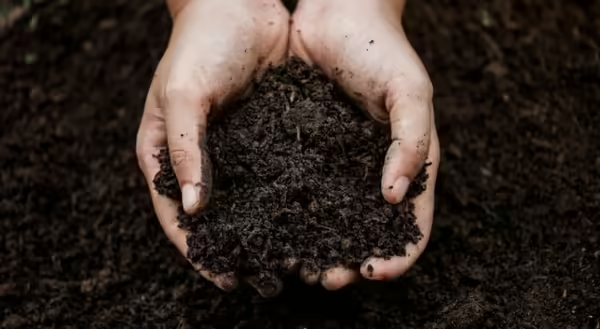
Stewardship (noun): the careful and responsible management of something entrusted to one’s care.
The National Association of Conservation Districts (NACD) is celebrating the 68th annual Stewardship Week from April 28th- May 5th, 2024. The NACD represents the 3,000 conservation districts in the United States that are each tasked with carrying out natural resource management programs at the local level. Your local Soil and Water Conservation District can help you navigate implementing conservation practices on agricultural land.
Farmers are important managers or stewards of our land. Their livelihoods depend on their ability to use the land. With this comes a responsibility to carefully and mindfully manage the land that they rely on. A part of being a good steward is utilizing conservation practices that help protect and preserve the environment now and for future generations. Healthy soils are a farmer’s greatest asset. With healthy soils, we can grow healthy food, maximize yields, and improve our cropland’s resilience to weeds, pests, and disease. We can maintain and even improve our soils by using best management practices on the farm. So how does a farmer become a good soil steward? Below I’ll outline some practices that can be used to improve and maintain our soils:
Know your soils
The first and arguably most important step to becoming a good soil steward is to know your soil. This means understanding the types of soils on your farm and the nutrient levels in your soils. Farmers should test their soils every 3-5 years or when a major change in management happens. A soil test helps growers make an informed decision about their nutrient inputs. Soil tests can tell you:
- The pH level of your soil
- The levels of plant-available macronutrients, like phosphorous and potassium
- The levels of plant-available micronutrients, like calcium and magnesium
- The amount of organic matter in your soil
Limit soil disturbance
Farmers can limit soil disturbance by switching to a low-till, no-till, or strip-till system. Using minimal amounts of tillage can help minimize erosion, preserve the soil’s structure, and build organic matter. Soil microbes form networks in the soil that can be disrupted by tillage, which ultimately impacts nutrient cycling and whether different nutrients are becoming available to crops. By limiting soil disturbances, farmers can strengthen their soils and improve water infiltration and soil aggregate stability.
Maximize biodiversity
Soils are home to more than 25 percent of our planet’s total biodiversity. In just one tablespoon of soil, there are more microorganisms than there are people on the planet. A diverse soil microbial community is essential to the health of our soils. Soil microbes play a vital role in making nutrients available to plants. To maximize the amount of biodiversity belowground, it’s important that we maximize biodiversity aboveground too. It has been shown that the amount of aboveground biodiversity is directly correlated to the amount of belowground biodiversity, so we can improve soil biodiversity by adding plants to our rotations. The easiest way to do this is by adding a cover crop or (even better!) a mix of cover crops.
Build topsoil
Topsoil is the uppermost layer of soil. It has the greatest amount of organic matter and microorganisms. Fun fact: topsoil is where most of Earth’s biological activity occurs! We are very fortunate to live in Illinois, which has some of the world’s most fertile topsoil. Growers can maintain and even build topsoil by implementing some of the practices we have already discussed, like reducing tillage and planting cover crops. The carbon found in cover crop residues can increase soil organic matter by up to 114%.
Farmers are quite literally invested in the land and soils are an investment that’s worth being protected! When we think about implementing conservation practices on the farm, I’m reminded of the common advice that’s given: Not every farm needs to do every practice, but everyone needs to do something. So, as we celebrate Stewardship Week, think about what you can do to be a good soil steward!
Our local conservation districts:
Marshall-Putnam Soil and Water Conservation District
1511 University Ave, Henry, IL 61537
Bureau County Soil and Water Conservation District
312 Backbone Rd E, Princeton, IL 61356
LaSalle County Soil and Water Conservation District
1691 N 31st Rd, Ottawa, IL 61350
Emily Hansen is a Commercial Agriculture Educator with University of Illinois Extension, serving Bureau, LaSalle, Marshall, and Putnam counties. Emily provides research-based educational programs that empower growers to make sustainable choices on their farms.
Brussaard, L., De Ruiter, P. C., & Brown, G. G. (2007). Soil biodiversity for agricultural sustainability. Agriculture, ecosystems & environment, 121(3), 233-244.
SARE Outreach & Clark, A. (2015). Cover Crops at Work: Increasing Soil Organic Matter. https://www.sare.org/publications/cover-crops/ecosystem-services/cover-crops-at-work-increasing-soil-organic-matter/
University of Illinois at Urbana-Champaign. Cooperative Extension Service. (2009). Illinois agronomy handbook (Vol. 1394). University of Illinois at Urbana-Champaign, College of Agriculture, Cooperative Extension Service.